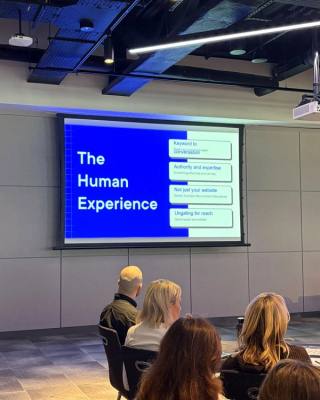As AI tools become a fact of life, it can be easy to forget just how similar they are to other products. Beyond their groundbreaking engineering and development, old fashioned design principles play a crucial role in their success, particularly when driving adoption amongst wide user groups.
As our work at Kooba illustrates, good technology is only as useful as the design through which the end user encounters it. For Kooba, this is normally a website, and for large language models (LLMs) such as ChatGPT, Claude, and Gemini, this is an interface through which a user can access the model itself. Either way, the actual connection between the user and the solution relies on intelligent, goal-oriented design work.
Making the artificial feel natural: Conversational UX design
Given that AI tools only received widespread attention in recent years, using them can feel strangely familiar. This is not a mistake, but rather a deliberate UX design choice, intended to make using novel platforms feel intuitive and natural. To accomplish this, platform designs have taken a form of interaction we already understand, the conversation, and integrated AI into that process.
Effective AI web design includes these conversational elements:
- Chat-based interfaces that reflect familiar digital communication patterns
- Typing indicators and response animations that create natural interaction pacing
- Personalised elements that make web-based AI tools feel responsive
- Natural language inputs that simplify complex technology interactions
- Conversation history and context awareness for coherent experiences
These design approaches make AI web platforms immediately accessible to users without technical backgrounds. In fact, this conversational design interface is arguably too effective. Users who have no understanding of the actual functions of LLMs can treat them like humans, creating alarming outcomes when chatbots facilitate these delusions.
Clarity and confidence: UI design that builds trust
While UX gives AI platforms a human rhythm, UI design determines how comfortable and confident users feel throughout their interaction. The most successful AI platforms share a common visual language: clean layouts, the thoughtful use of white space, and subtle cues that guide users effortlessly through the experience.
This minimalist approach isn’t about style for style’s sake. It removes friction, keeps the interface approachable, and ensures the user’s focus stays on the task at hand. Animations, status indicators, and dynamic responses also play a key role. When the model is “thinking,” small visual signals like pulsing dots or fading loaders reassure the user that something is happening, even when the response takes a few moments to arrive.
These visual affordances may seem minor, but they are essential to user trust. Without them, even a moment of lag can break the illusion of intelligence, and by extension, the credibility of the entire experience.
The interface is the product
The reality is simple: powerful technology, without great design, is inaccessible for most users. AI tools may be transformative under the hood, but users never interact with the model directly, they deal with an interface. If that interface is confusing, cluttered, or inconsistent, the power of the underlying technology is irrelevant.
This is why design cannot be an afterthought. For AI to reach mass adoption, the experience of using it must feel seamless. At Kooba, we understand that the product is not just the algorithm or the codebase, but also the experience a user has from the first click to the final output. This applies to websites, applications, and especially AI tools.
A good interface bridges the gap between potential and actual impact. It transforms something abstract and technical into something users can connect with, trust, and rely on in daily life.
Designing for the future of AI
AI platforms will only become more complex and more embedded in daily life. As they do, the importance of UX and UI design will grow in parallel. There is immense potential in these tools, but unlocking it requires design that understands users, anticipates needs, and guides interactions naturally.
At Kooba, we believe that good design is not just a wrapper for technology, but the steering wheel through which users can access its full potential.
If you’d like to see how our design team can connect your technology with your users, just get in touch.









